Abstract
Standard plate count (SPC) bacteria were isolated from a drinking-water treatment facility and from the river supplying the facility. All isolates were identified and tested for their resistance to six antibiotics to determine if drug-resistant bacteria were selected for as a consequence of water treatment. Among the isolates surviving our test procedures, there was a significant selection (P less than 0.05) of gram-negative SPC organisms resistant to two or more of the test antibiotics. These bacteria were isolated from the flash mix tank, where chlorine, alum, and lime are added to the water. Streptomycin resistance in particular was more frequent in this population as compared with bacteria in the untreated river water (P less than 0.01). SPC bacteria from the clear well, which is a tank holding the finished drinking water at the treatment facility, were also more frequently antibiotic resistant than were the respective river water populations. When 15.8 and 18.2% of the river water bacteria were multiply antibiotic resistant, 57.1 and 43.5%, respectively, of the SPC bacteria in the clear well were multiply antibiotic resistant. Selection for bacteria exhibiting resistance to streptomycin was achieved by chlorinating river water in the laboratory. We concluded that the selective factors operating in the aquatic environment of a water treatment facility can act to increase the proportion of antibiotic-resistant members of the SPC bacterial population in treated drinking water.
Full text
PDF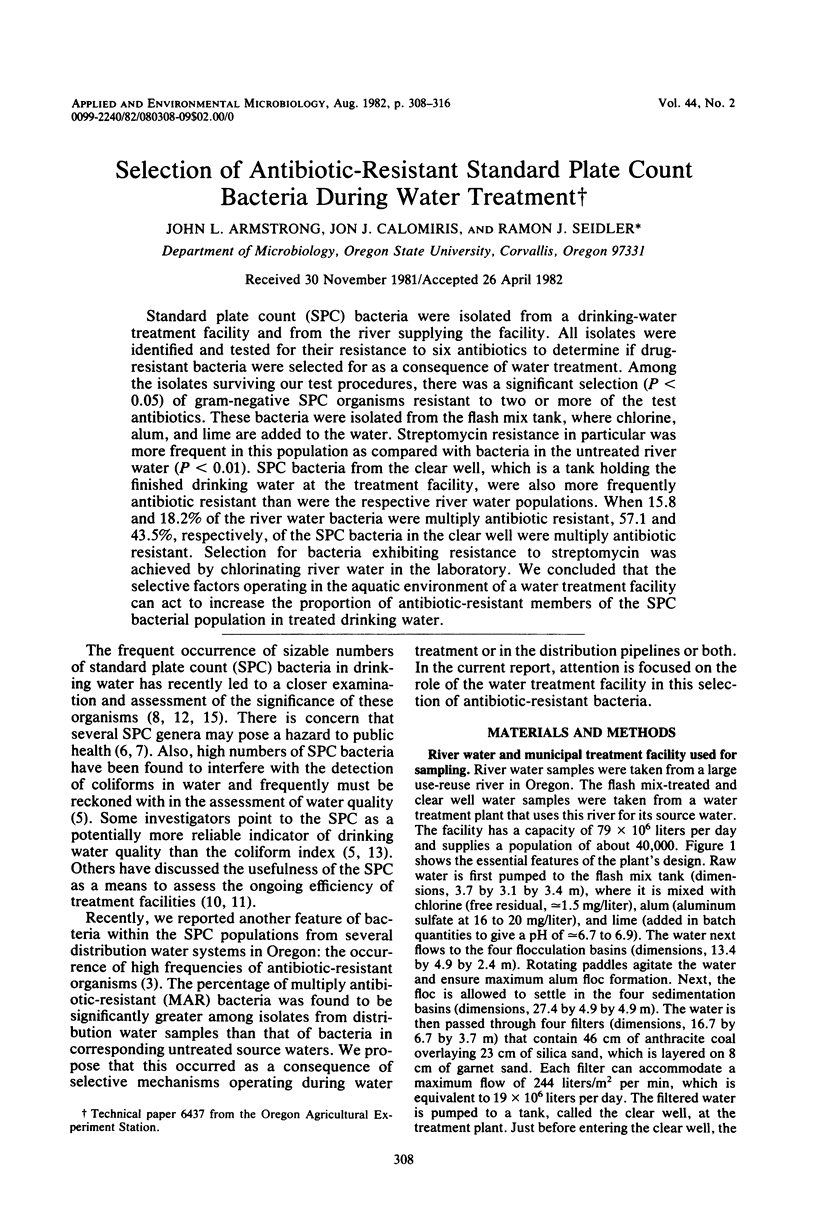
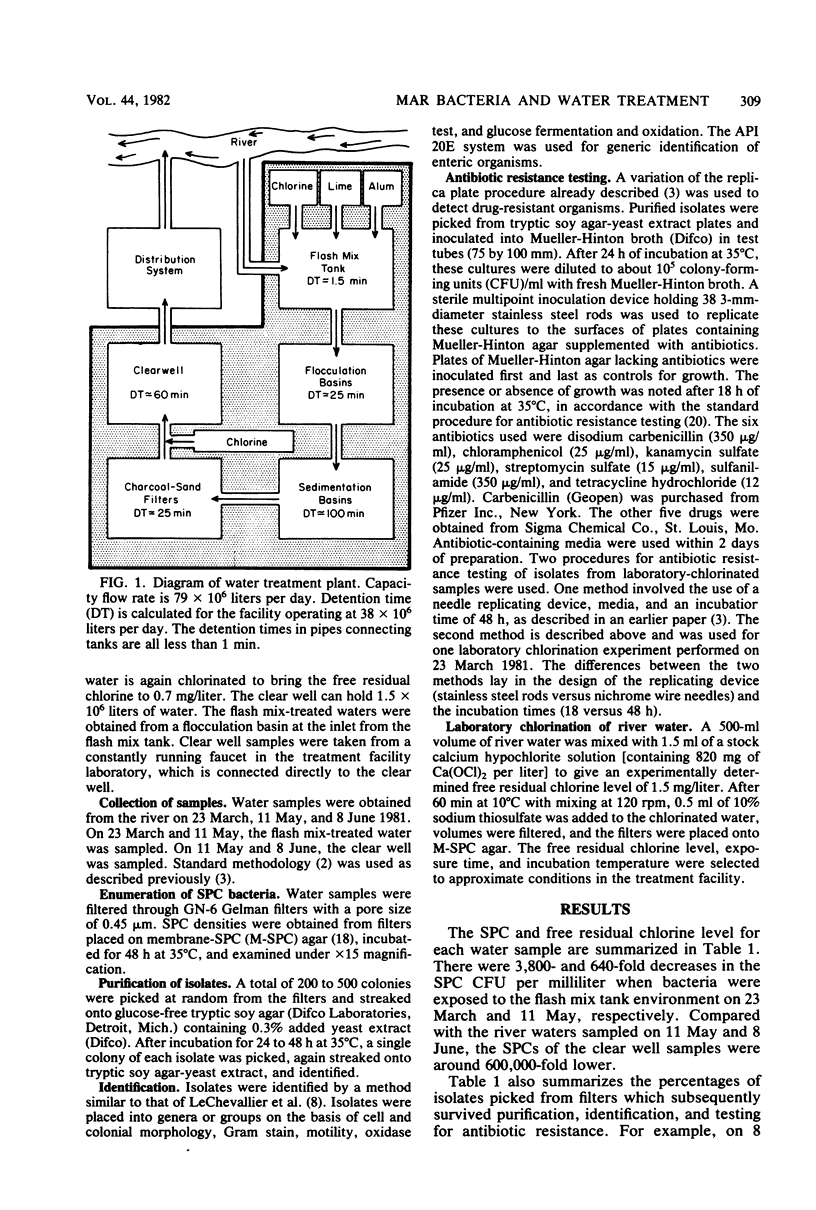
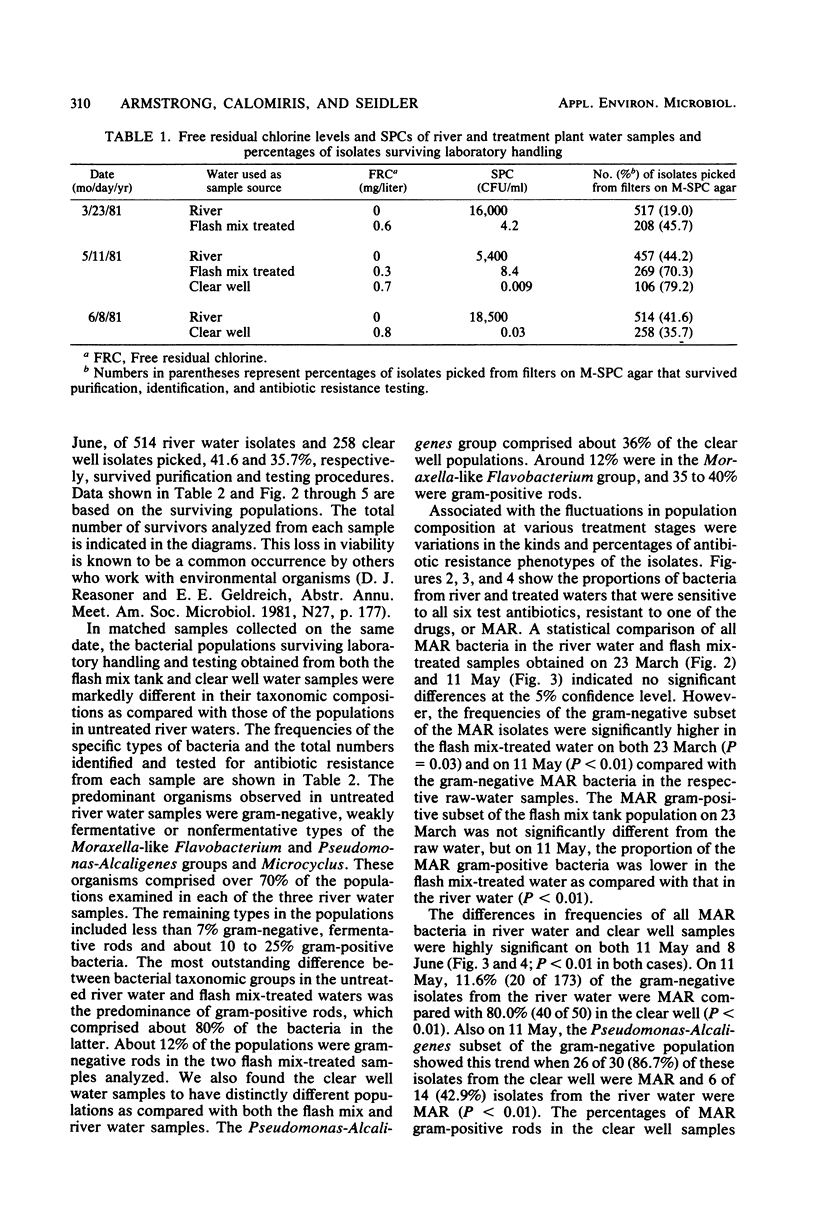
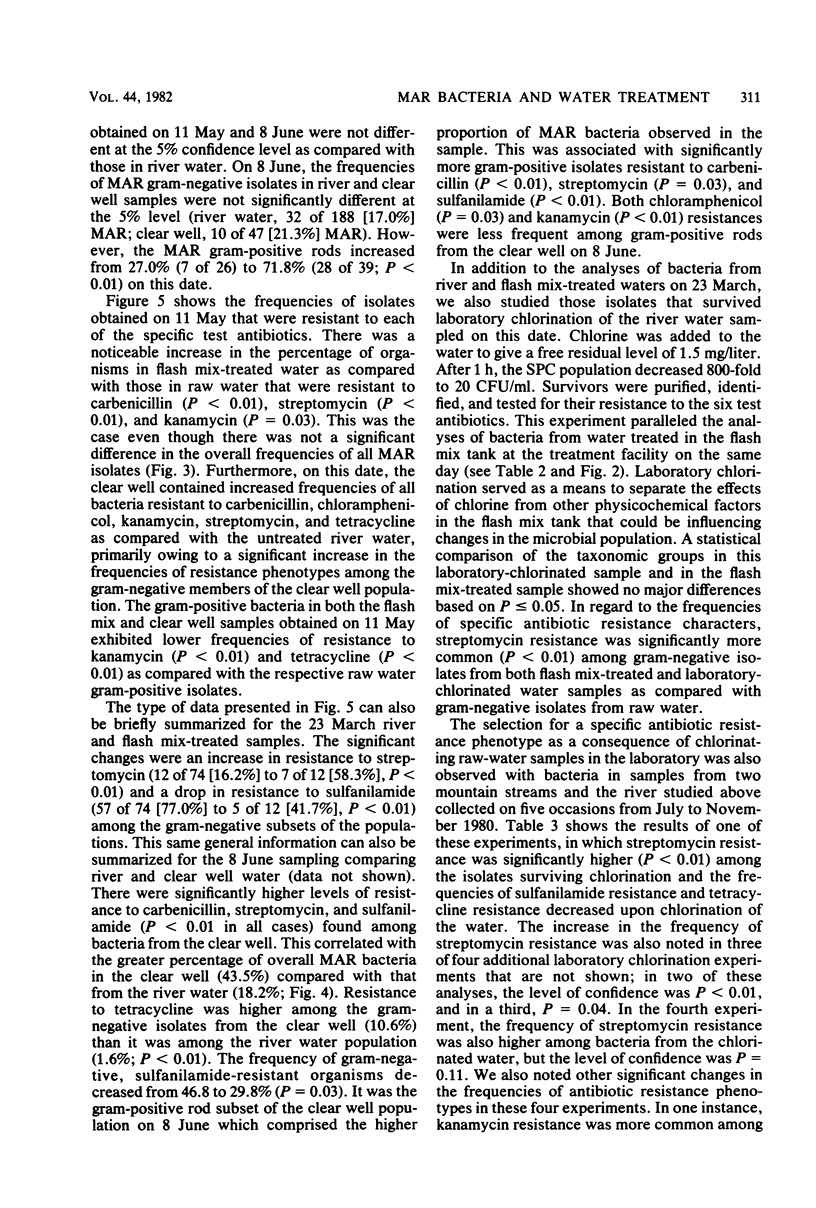
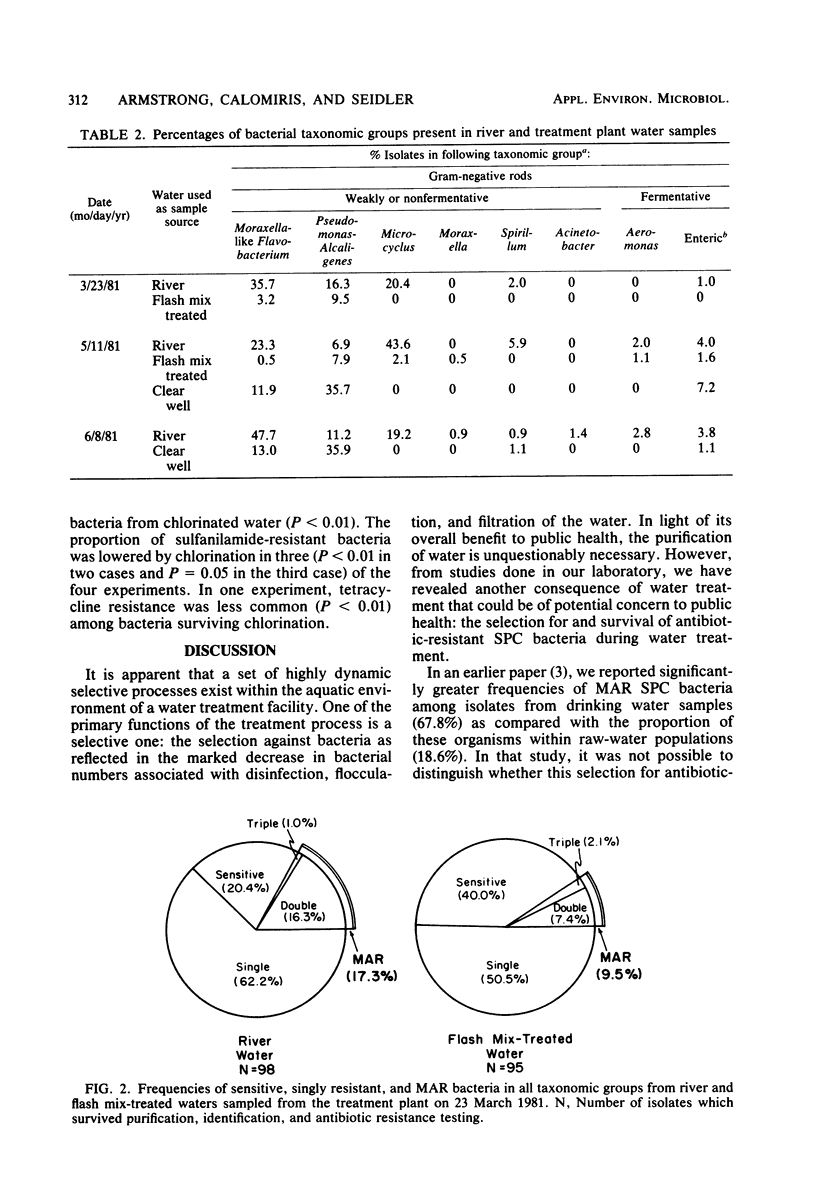
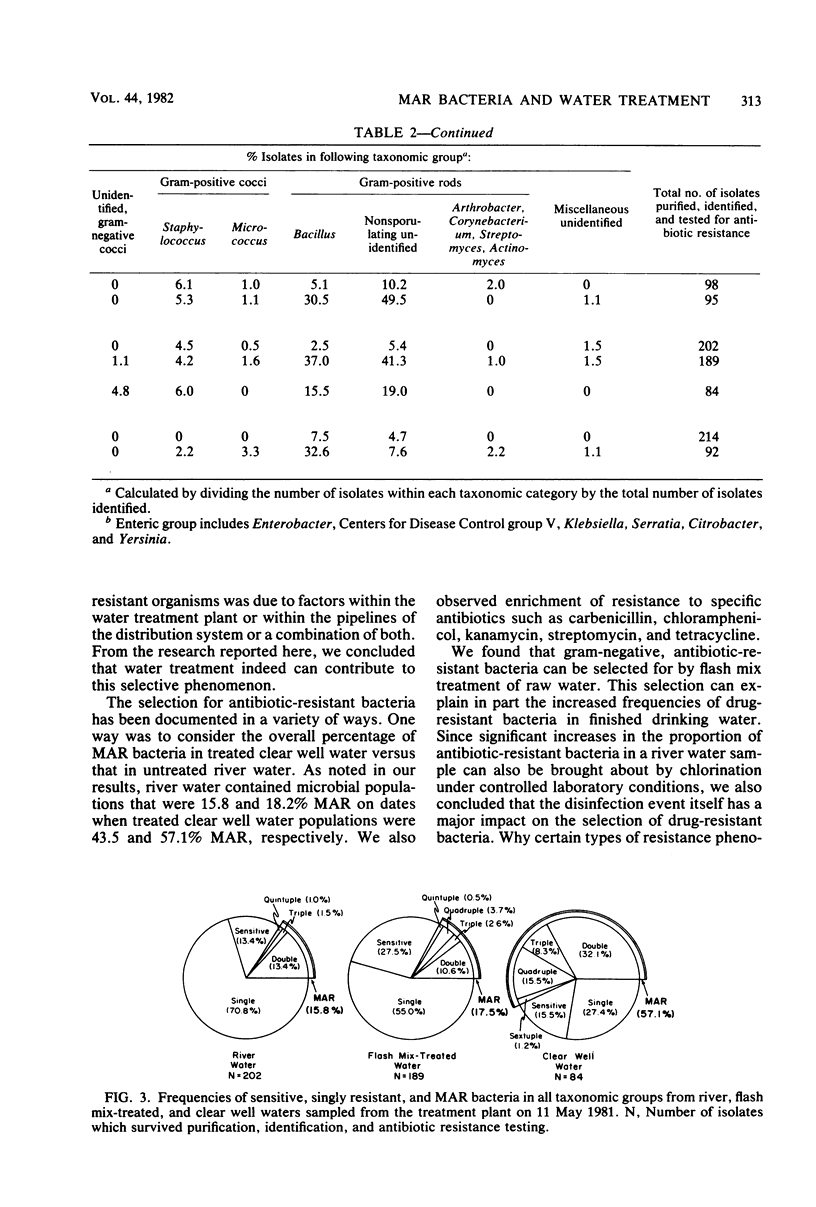

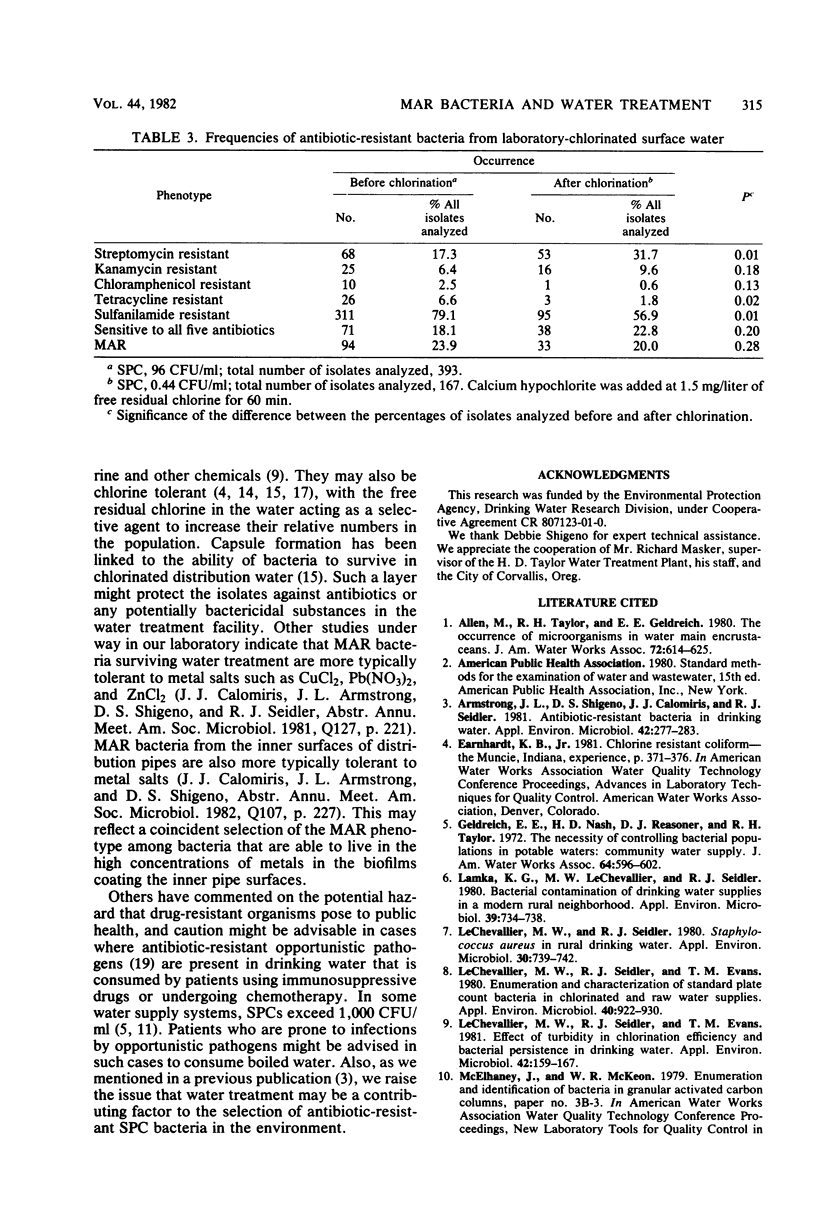

Selected References
These references are in PubMed. This may not be the complete list of references from this article.
- Armstrong J. L., Shigeno D. S., Calomiris J. J., Seidler R. J. Antibiotic-resistant bacteria in drinking water. Appl Environ Microbiol. 1981 Aug;42(2):277–283. doi: 10.1128/aem.42.2.277-283.1981. [DOI] [PMC free article] [PubMed] [Google Scholar]
- Lamka K. G., LeChevallier M. W., Seidler R. J. Bacterial contamination of drinking water supplies in a modern rural neighborhood. Appl Environ Microbiol. 1980 Apr;39(4):734–738. doi: 10.1128/aem.39.4.734-738.1980. [DOI] [PMC free article] [PubMed] [Google Scholar]
- LeChevallier M. W., Evans T. M., Seidler R. J. Effect of turbidity on chlorination efficiency and bacterial persistence in drinking water. Appl Environ Microbiol. 1981 Jul;42(1):159–167. doi: 10.1128/aem.42.1.159-167.1981. [DOI] [PMC free article] [PubMed] [Google Scholar]
- LeChevallier M. W., Seidler R. J., Evans T. M. Enumeration and characterization of standard plate count bacteria in chlorinated and raw water supplies. Appl Environ Microbiol. 1980 Nov;40(5):922–930. doi: 10.1128/aem.40.5.922-930.1980. [DOI] [PMC free article] [PubMed] [Google Scholar]
- LeChevallier M. W., Seidler R. J. Staphylococcus aureus in rural drinking water. Appl Environ Microbiol. 1980 Apr;39(4):739–742. doi: 10.1128/aem.39.4.739-742.1980. [DOI] [PMC free article] [PubMed] [Google Scholar]
- Seyfried P. L., Fraser D. J. Persistence of Pseudomonas aeruginosa in chlorinated swimming pools. Can J Microbiol. 1980 Mar;26(3):350–355. doi: 10.1139/m80-057. [DOI] [PubMed] [Google Scholar]
- von Graevenitz A. The role of opportunistic bacteria in human disease. Annu Rev Microbiol. 1977;31:447–471. doi: 10.1146/annurev.mi.31.100177.002311. [DOI] [PubMed] [Google Scholar]


